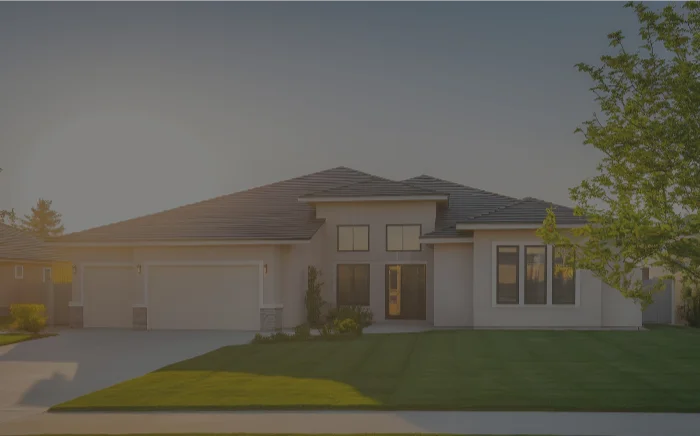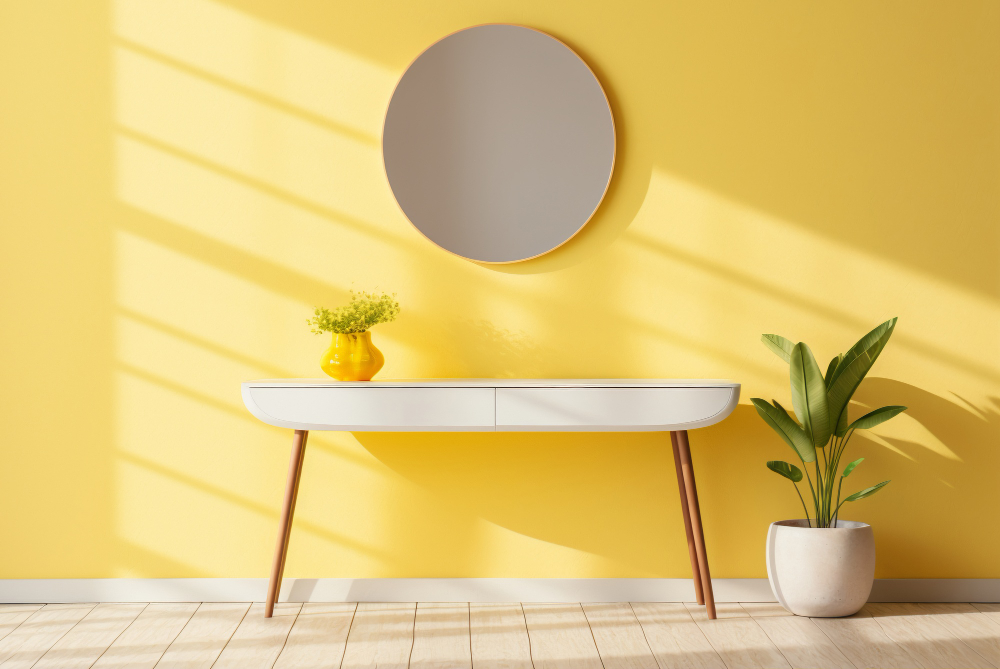

Choosing the perfect paint color for your home can feel overwhelming. You spend hours at the paint store, carefully comparing swatches, only to get the paint home and discover it looks completely different on your walls. The culprit? Lighting.
The way light interacts with paint creates dramatic shifts in how colors appear throughout the day and across different rooms. Natural sunlight, warm incandescent bulbs, and cool LED fixtures each cast their own influence on your carefully chosen hues. Understanding this relationship between light and color is essential for making confident paint decisions that you'll love in any lighting condition.
Whether you're planning a single accent wall or a whole-home makeover, this guide will help you navigate the complex world of paint colors and lighting to achieve the exact look you envision.
Light doesn't just illuminate paint—it fundamentally alters how we perceive color. This happens because paint colors are created by pigments that absorb certain wavelengths of light while reflecting others back to our eyes. When the light source changes, different wavelengths become available, causing the same paint to appear as entirely different colors.
The phenomenon becomes particularly noticeable when you compare how a color looks under the store's fluorescent lighting versus your home's warm evening lamps. That soft, sophisticated gray you selected might appear blue-toned under cool lighting or take on a beige cast under warm bulbs.
Color temperature, measured in Kelvin, plays the starring role in this transformation. Lower Kelvin numbers (2700K-3000K) produce warm, yellowish light, while higher numbers (5000K-6500K) create cool, bluish light. Each temperature brings out different undertones in your paint, sometimes dramatically shifting the entire appearance of a room.
Natural light provides the most accurate representation of paint colors, but it constantly changes throughout the day. Morning light tends to be cooler and bluer, gradually warming as the sun climbs higher. Midday sun offers the truest color representation, while afternoon and evening light becomes progressively warmer and more golden.
North-facing rooms receive consistent, cool natural light throughout the day, which can make warm colors appear muted and enhance cool undertones. South-facing rooms enjoy abundant warm light that intensifies warm colors and can make cool colors appear more neutral. East-facing rooms get bright, cool morning light that transitions to warmer tones, while west-facing rooms experience the reverse pattern.
Traditional incandescent bulbs and halogen lights emit warm light around 2700K-3000K. This warm light enhances reds, yellows, and oranges while dulling blues and greens. Whites may appear cream or yellow-tinted, and cool grays often shift toward beige or brown undertones.
LED lights come in various color temperatures, from warm (2700K) to daylight (5000K-6500K). Warm LED bulbs closely mimic incandescent lighting effects, while daylight LEDs provide cooler, more neutral illumination that can make warm colors appear less vibrant and enhance cool undertones.
Fluorescent lighting, common in offices and some homes, typically produces cool, sometimes greenish light that can make skin tones appear sallow and distort paint colors unpredictably.
Start by observing your room at different times of day. Note which direction your windows face and how much natural light enters throughout the day. Rooms with abundant natural light offer more flexibility in color choices, while dimly lit spaces require more careful consideration.
Pay attention to how existing colors in your room appear under different lighting conditions. This observation will give you valuable insight into how new paint colors might behave in the same space.
Never rely solely on small paint swatches when making color decisions. Purchase sample sizes of your top color choices and paint large swatches directly on your walls. Apply the paint in areas that receive different amounts of light throughout the day.
Live with these test patches for at least a week, observing how they look in morning light, afternoon sun, and under your artificial lighting in the evening. Take photos at different times of day, as cameras often capture color variations that our eyes adjust to automatically.
If your home primarily uses warm lighting, consider how this will affect your chosen colors. Warm light will intensify warm paint colors and may make them appear more saturated than intended. Cool colors might appear muted or take on unexpected undertones.
For homes with predominantly cool lighting, warm paint colors may appear less vibrant, while cool colors will be enhanced. Neutral colors can shift dramatically—what appears as a soft gray in daylight might look blue or green under cool LED lighting.
Paint stores often use bright fluorescent or LED lighting that differs significantly from typical home lighting. Colors that look perfect in the store may appear completely different once you get them home. Always test colors in your actual space before committing to a full room.
Many homeowners test paint colors only in natural daylight, forgetting that they'll spend most of their evening hours under artificial lighting. Make sure to evaluate your color choices under your home's typical evening lighting conditions, as this is when you'll notice problems most acutely.
Paint colors don't exist in a vacuum—they interact with your furniture, flooring, and decorative elements. Consider how your lighting will affect these interactions. A paint color that coordinates beautifully with your sofa in natural light might clash under warm evening lighting.
Create multiple light sources in each room to provide consistent color rendering throughout the day. Combine overhead lighting with task lighting and accent lights to minimize harsh shadows and color distortions.
The angle at which light hits your walls affects color perception. Walls perpendicular to windows often appear darker than those directly illuminated, which can make the same paint color look different on different walls within the same room.
Strategic lighting placement can actually improve how your paint colors appear. Place warm accent lights near cool-colored walls to add depth and warmth, or use cooler task lighting to keep warm colors from appearing overwhelming.
Complex color and lighting interactions can be challenging to navigate alone. Professional interior painters bring years of experience understanding how different paints behave under various lighting conditions. They can recommend specific paint formulations and finishes that work best with your home's unique lighting situation.
Professionals also have access to color-matching technology and extensive knowledge of how different paint brands and formulations respond to light. This expertise can save you time, money, and the frustration of repainting when colors don't turn out as expected.
Understanding how lighting affects paint colors empowers you to make confident decorating decisions that you'll love for years to come. By taking time to properly test colors and consider your home's lighting throughout the day, you'll avoid costly mistakes and create spaces that look exactly as you envisioned.
Remember that lighting and paint work together to create the atmosphere in your home. When these elements harmonize perfectly, they enhance your daily living experience and increase your home's overall appeal and value.
If you're looking for interior painters in Orlando, FL, contact Rusty's Painting today to request an estimate. Our experienced team understands the unique lighting challenges of Florida homes and can help you select and apply paint colors that look stunning in any light.